
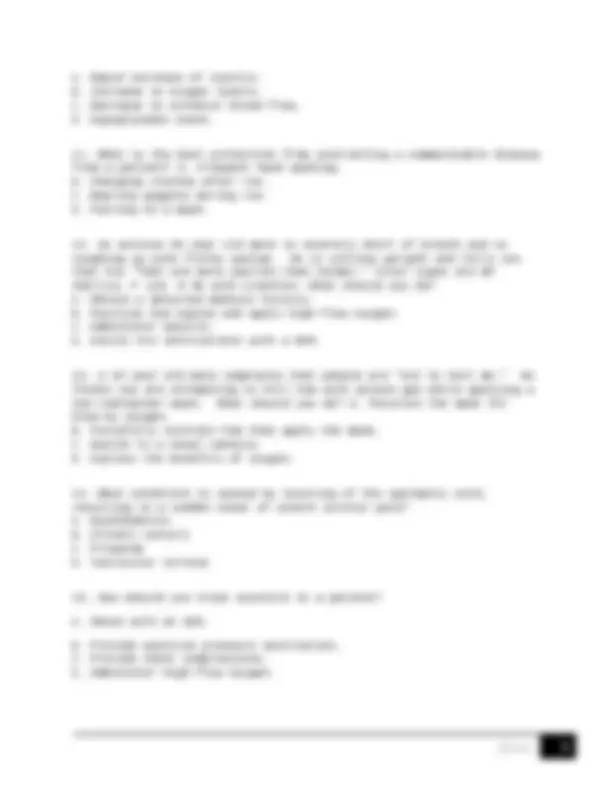
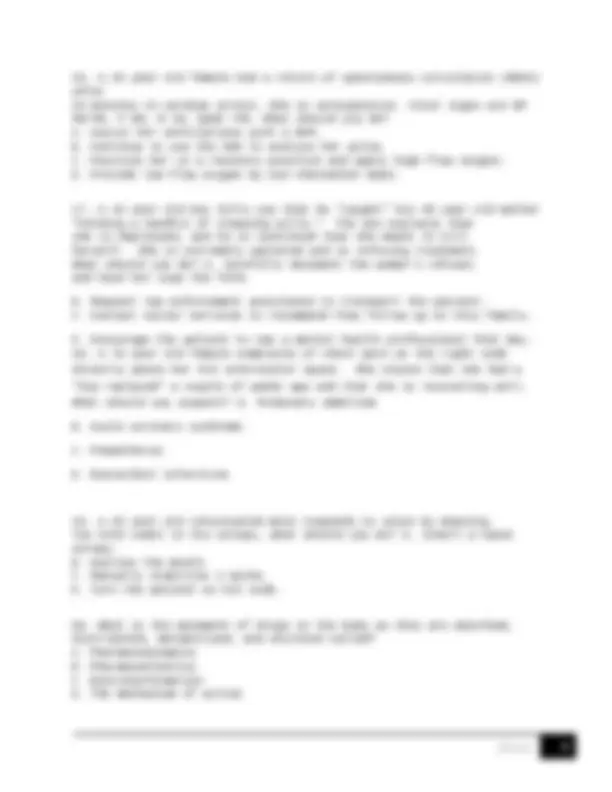
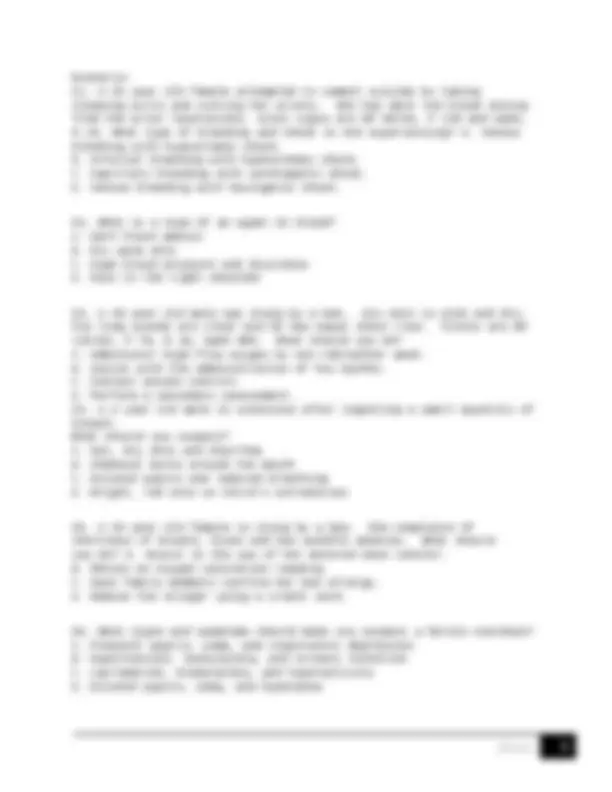
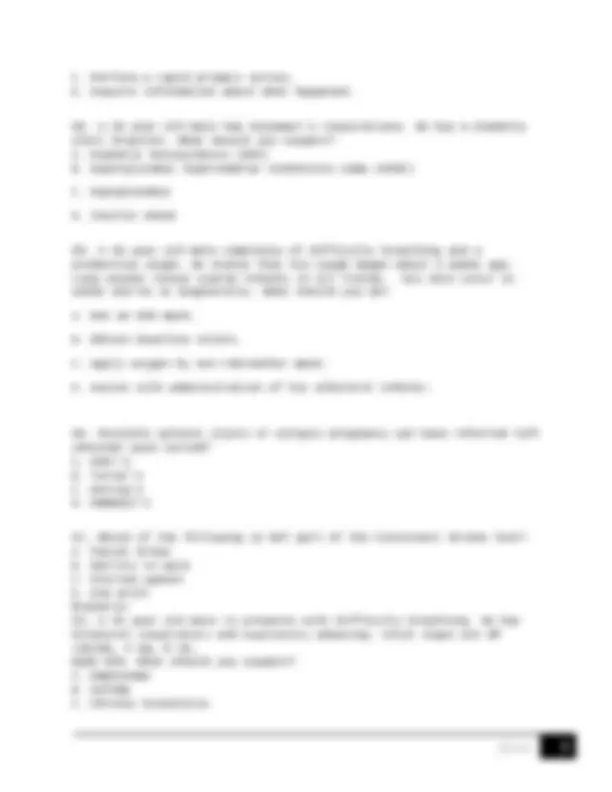
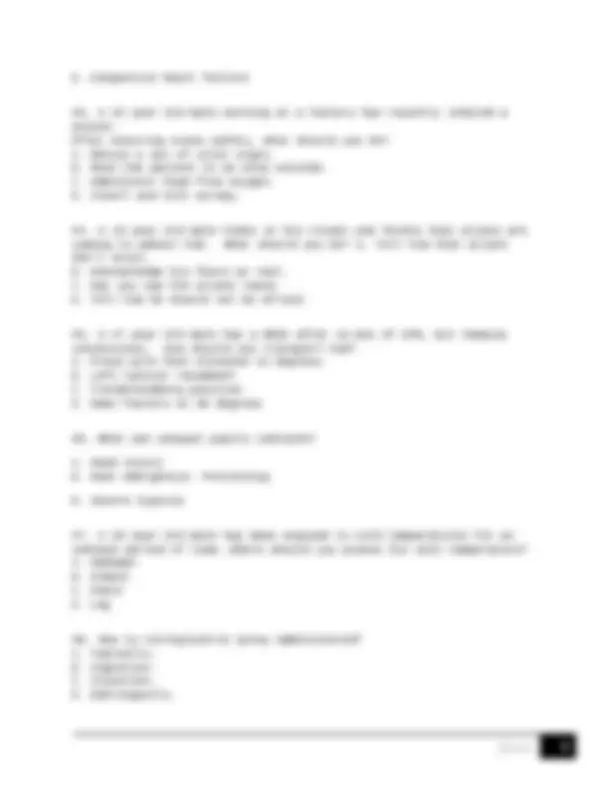
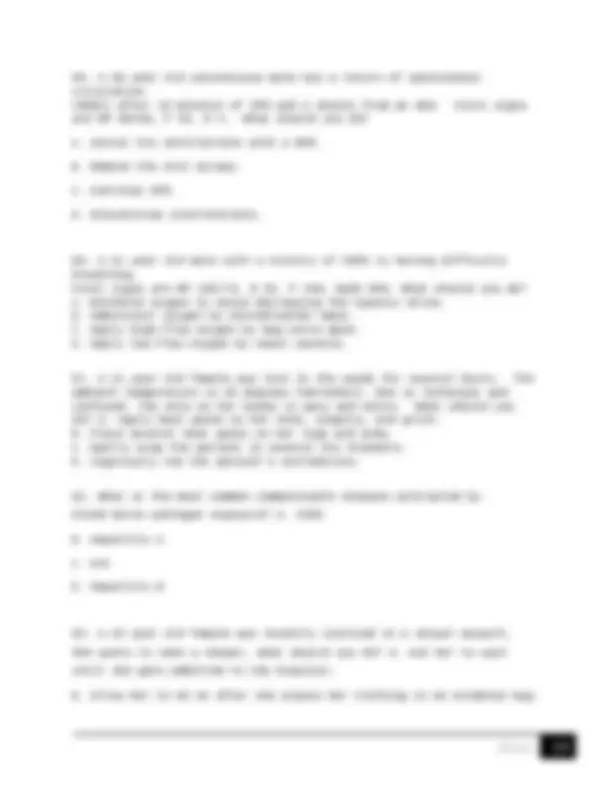

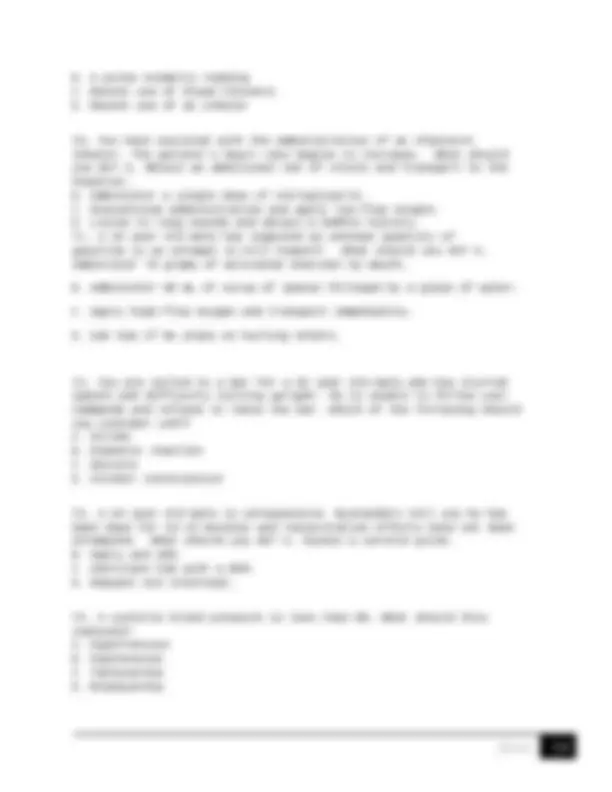
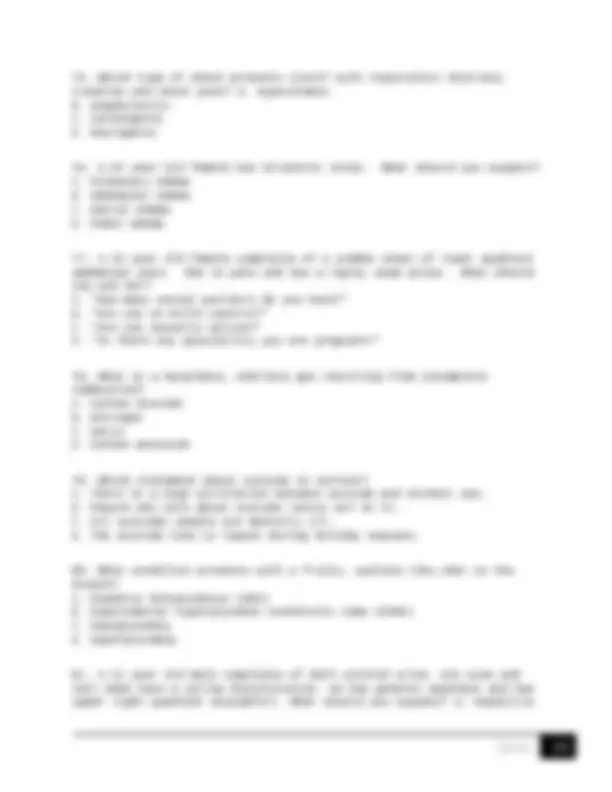
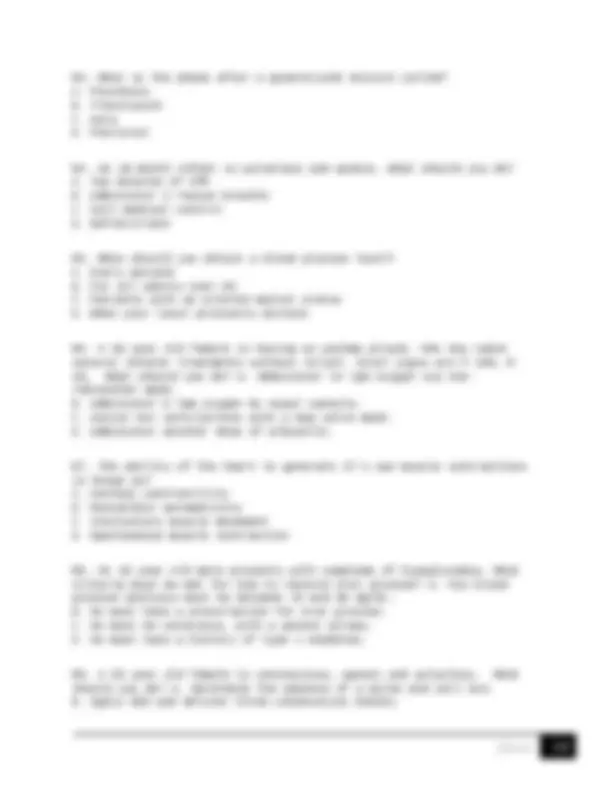
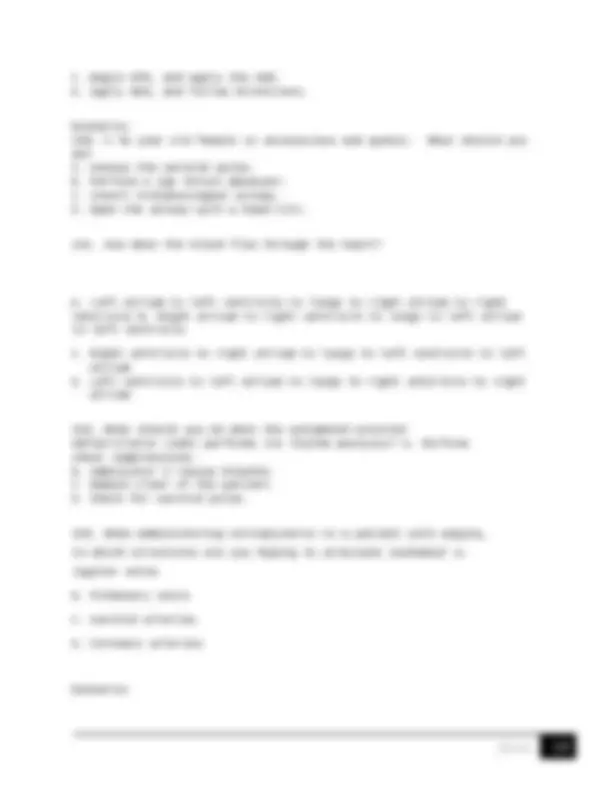
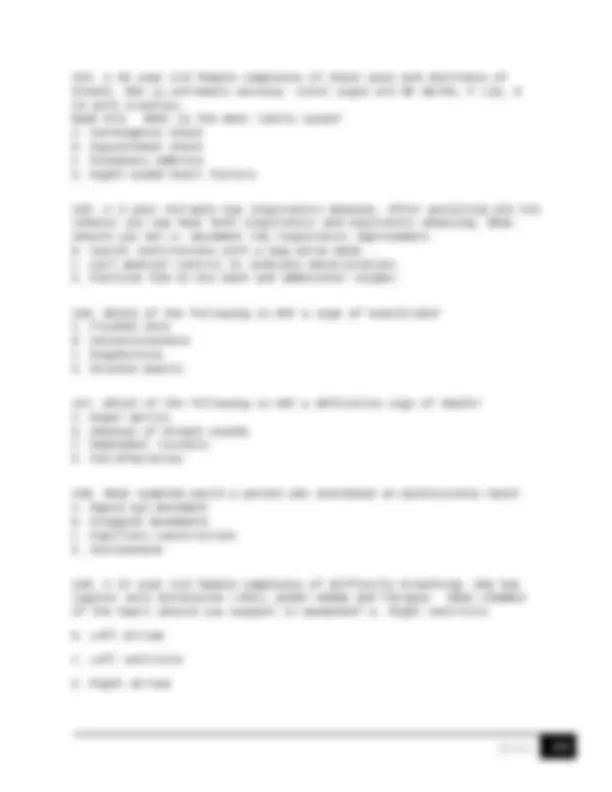
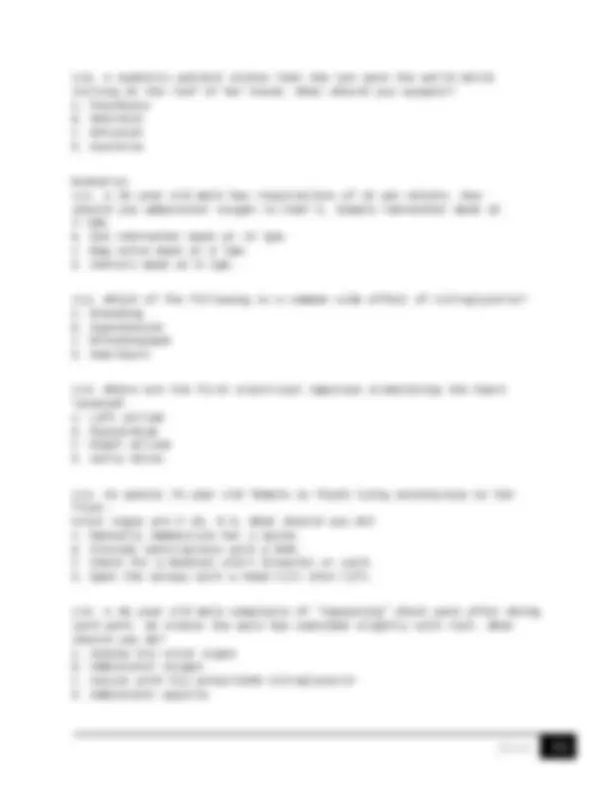
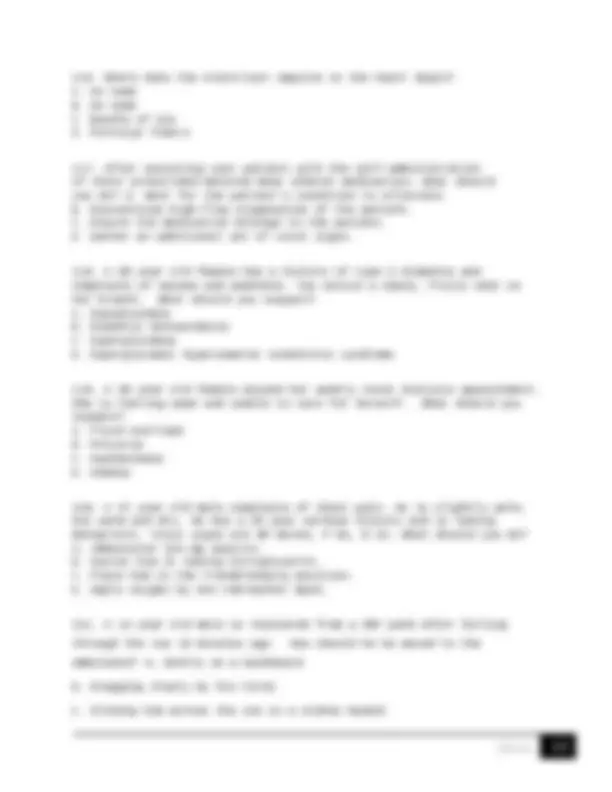
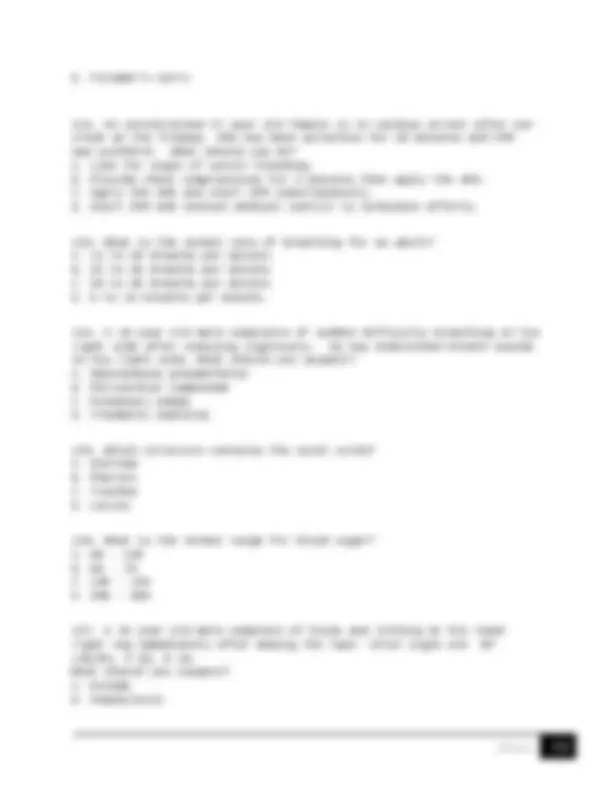
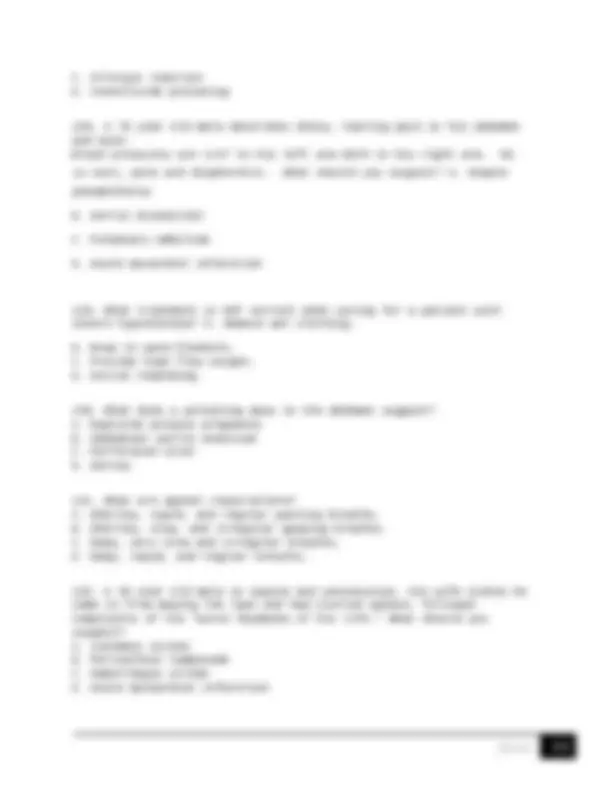
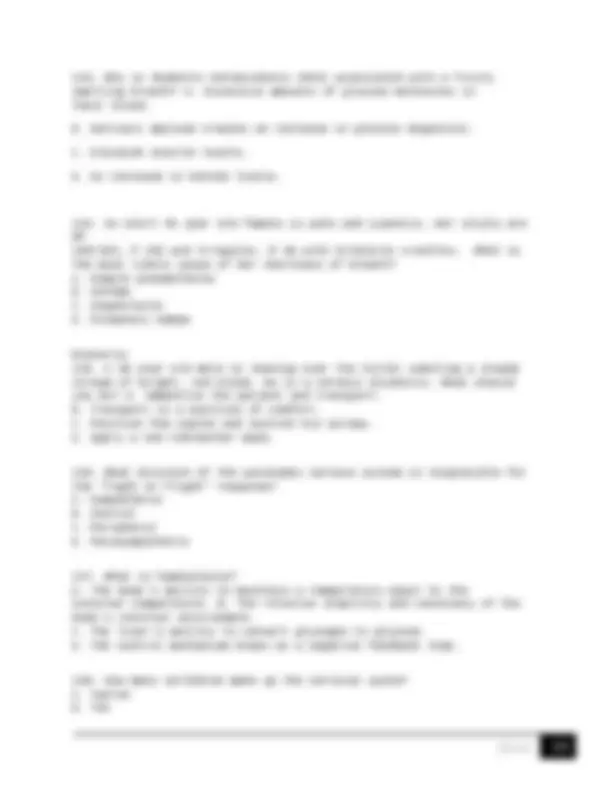
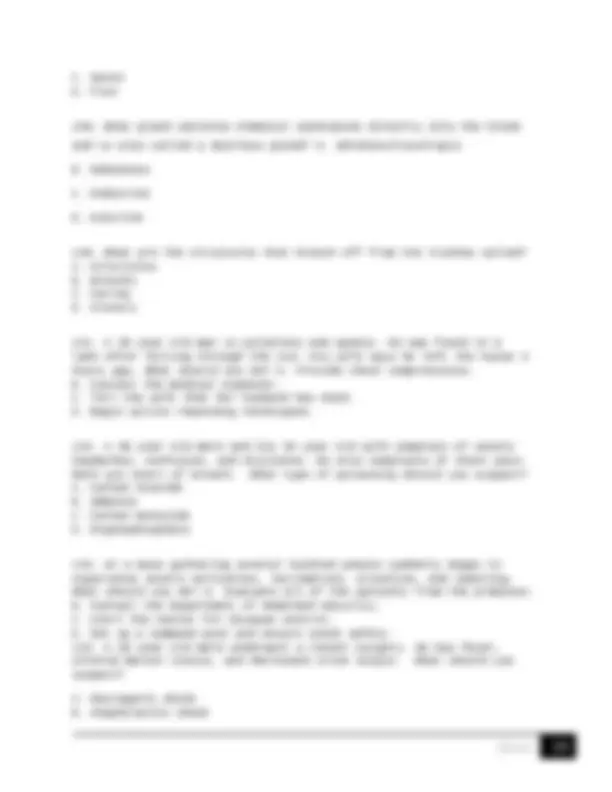
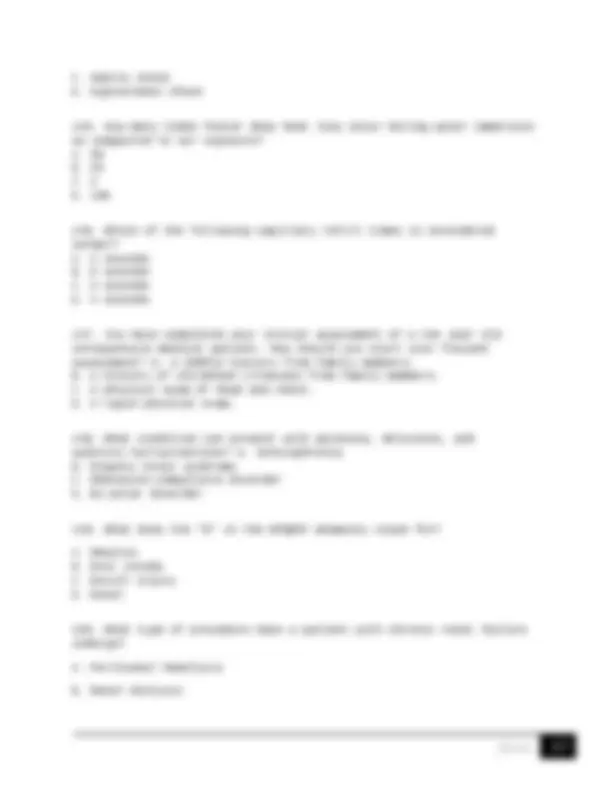
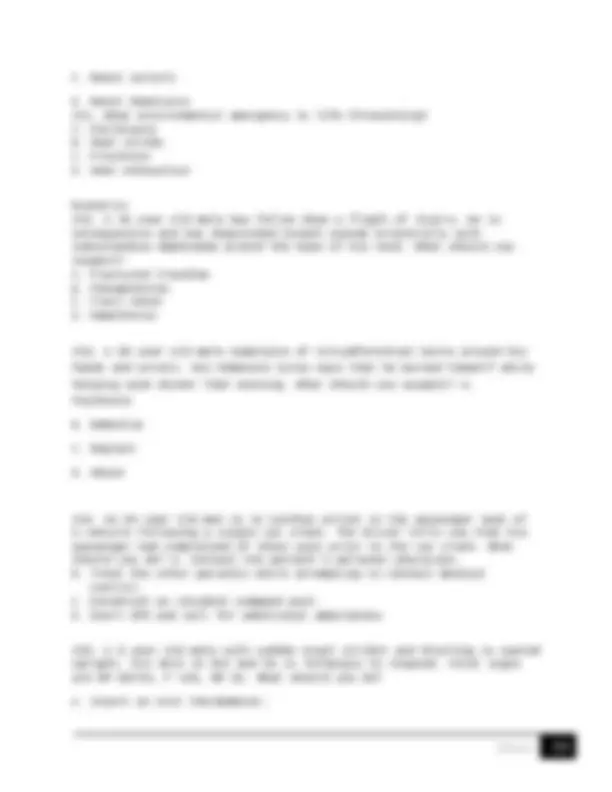
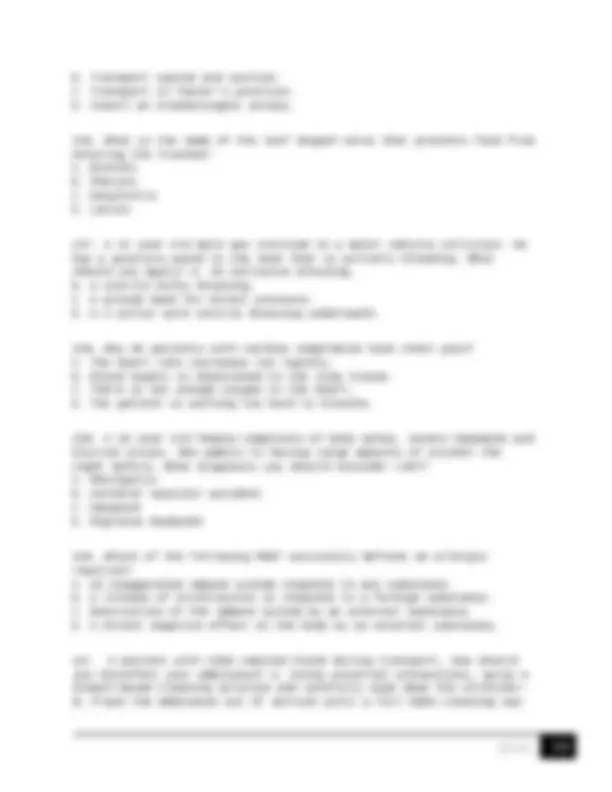
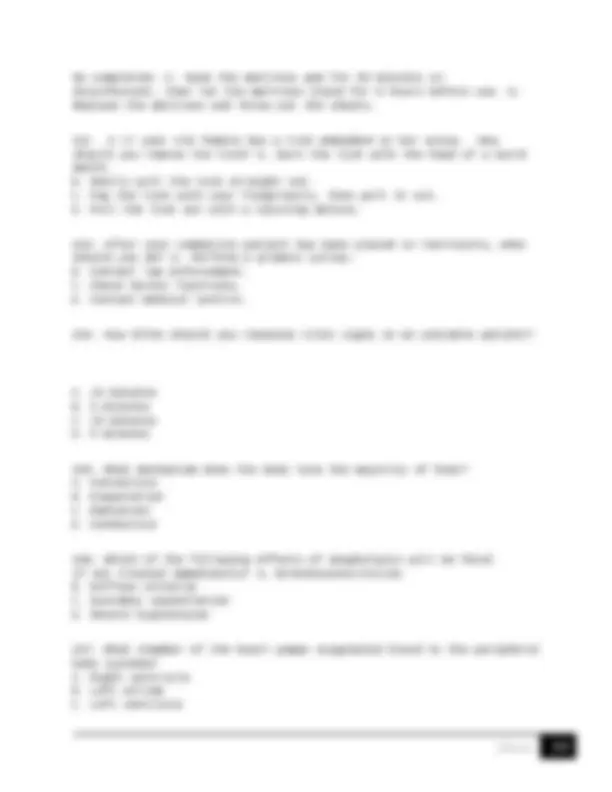
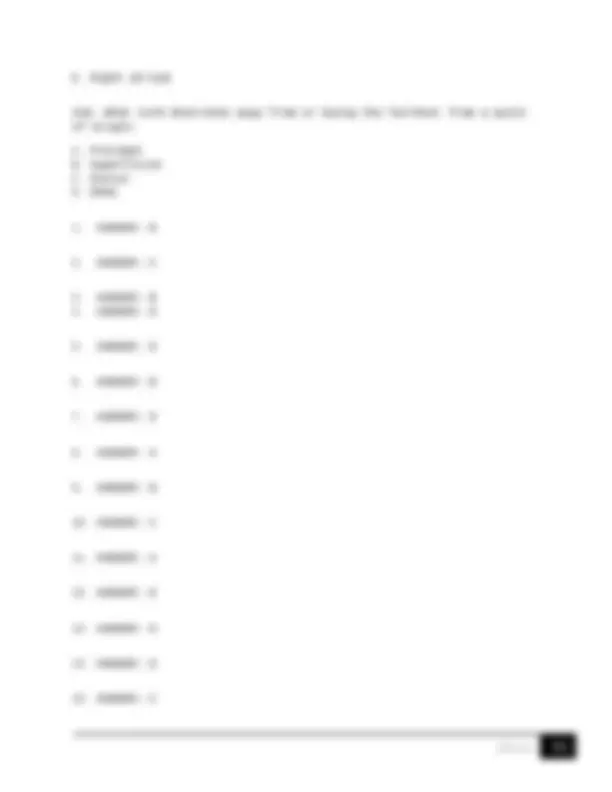
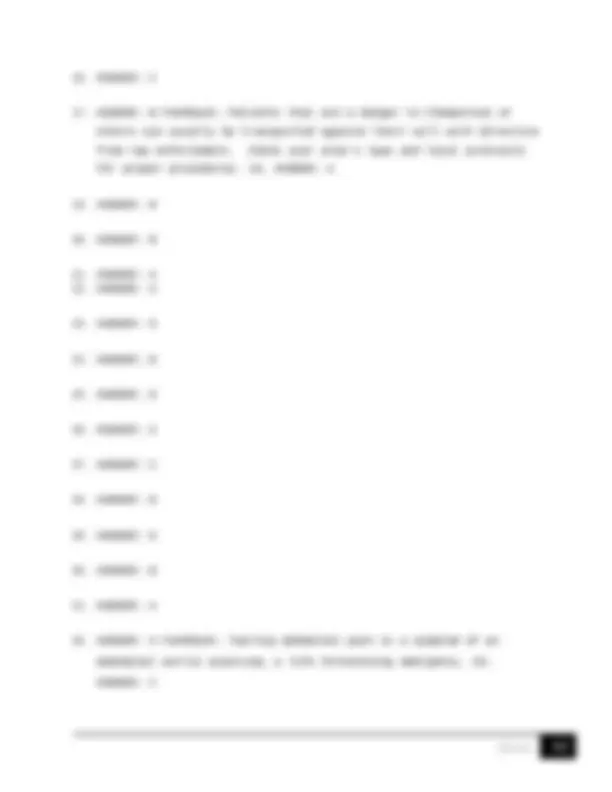

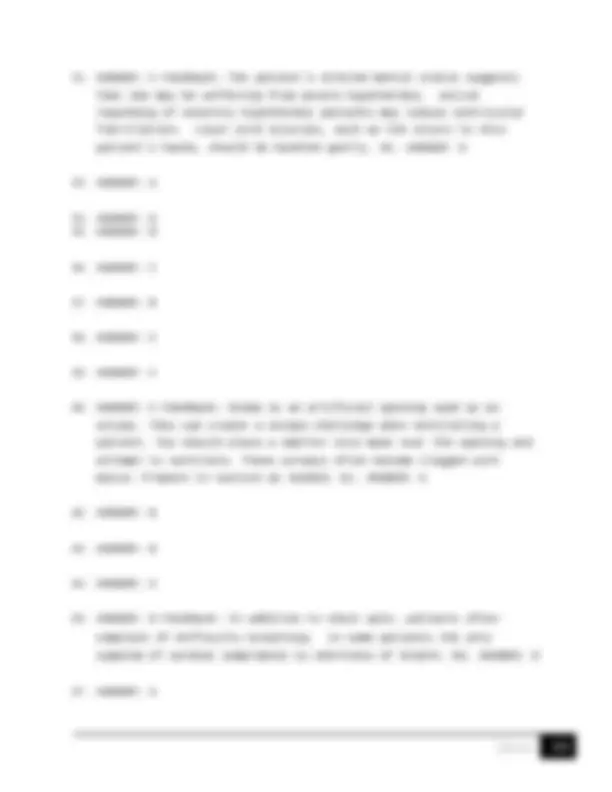
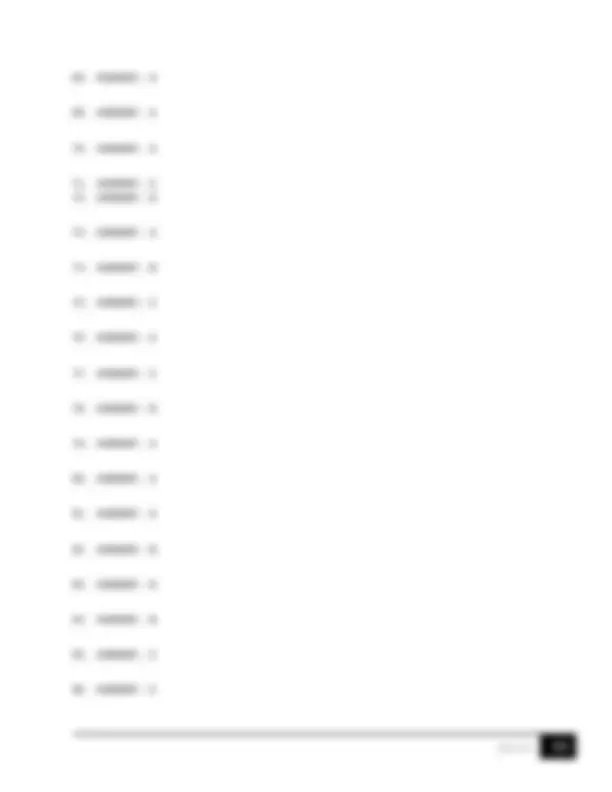
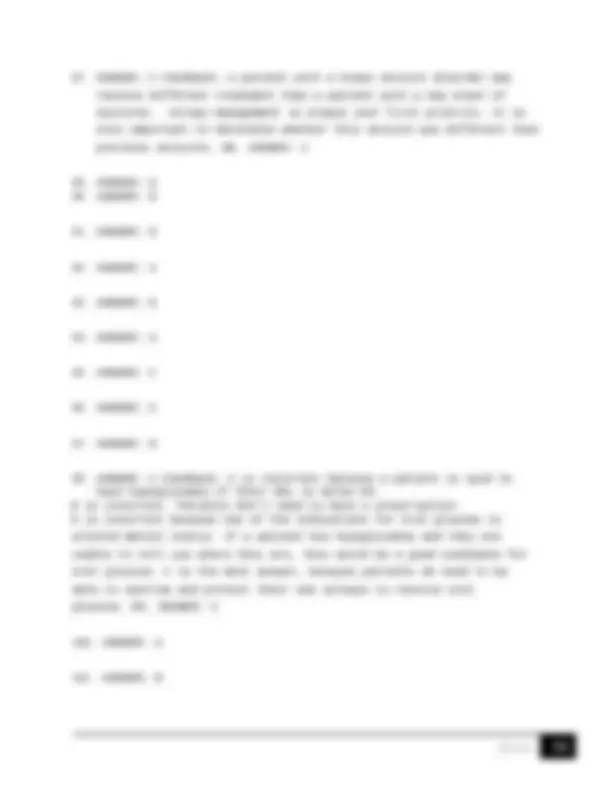
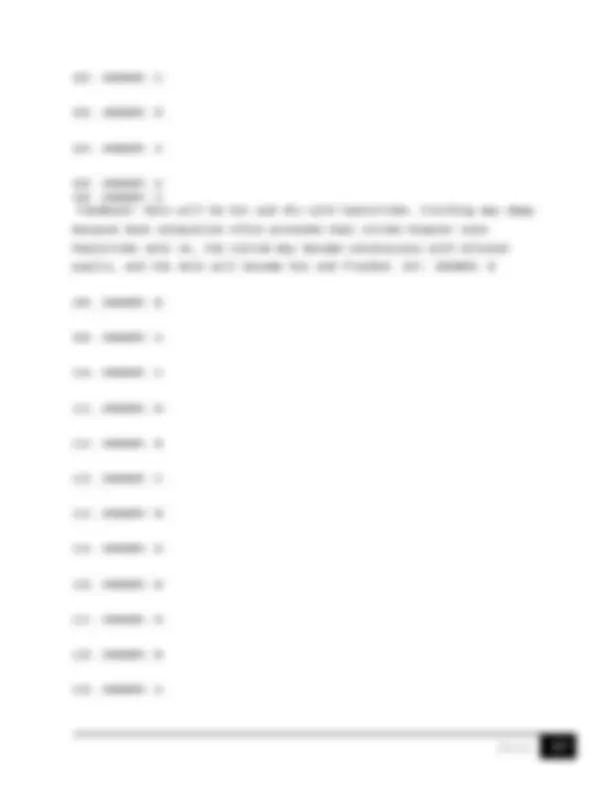
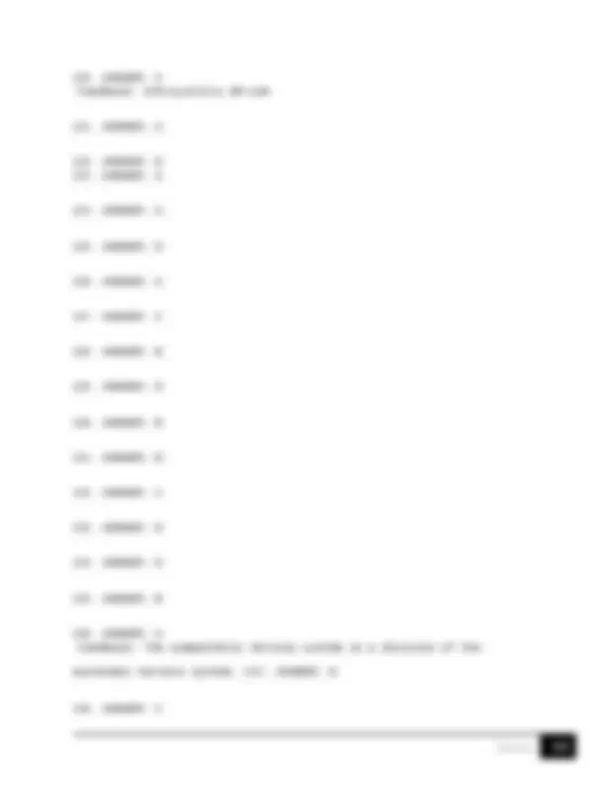
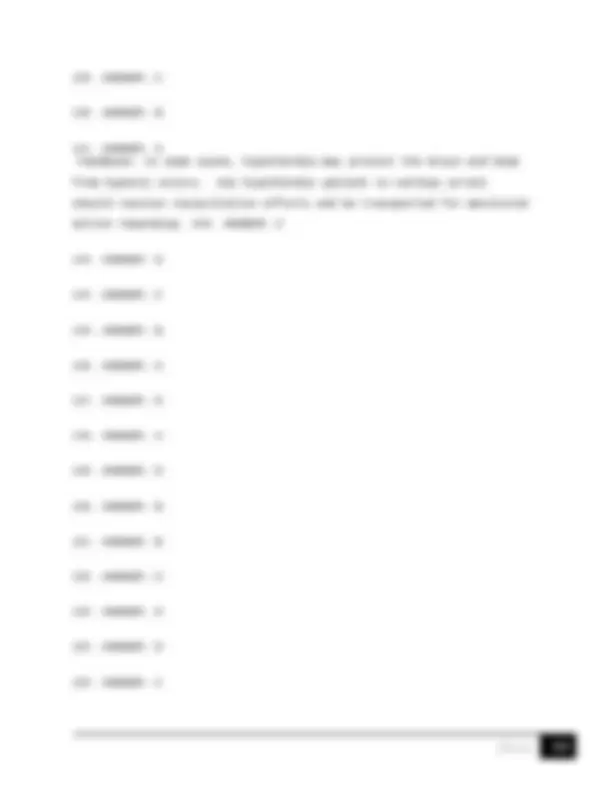
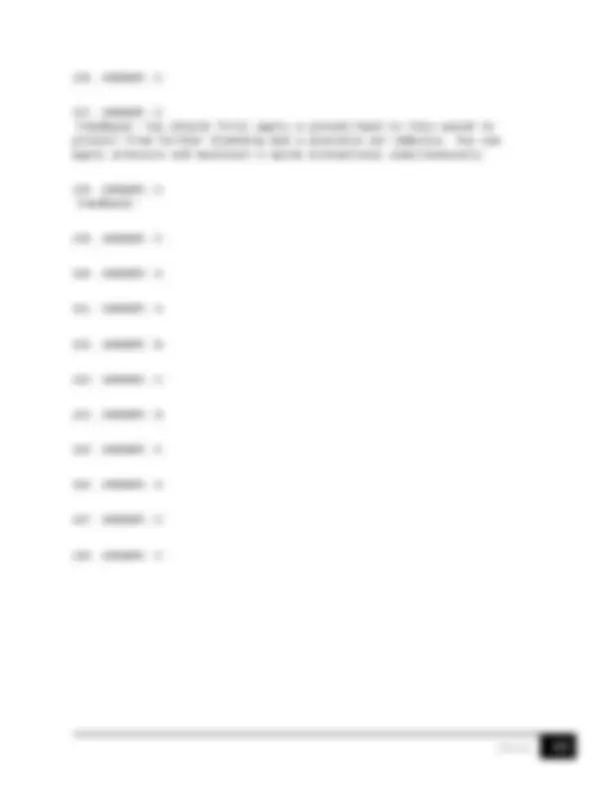


Study with the several resources on Docsity

Earn points by helping other students or get them with a premium plan


Prepare for your exams
Study with the several resources on Docsity

Earn points to download
Earn points by helping other students or get them with a premium plan
Community
Ask the community for help and clear up your study doubts
Discover the best universities in your country according to Docsity users
Free resources
Download our free guides on studying techniques, anxiety management strategies, and thesis advice from Docsity tutors
FISDAP MEDICAL CARE AND TREATMENT TEST EXAM QUESTIONS WITH ANSWERS 1. What is the effect of oral glucose? A. Lowers blood sugar B. Raises blood sugar C. Stimulates gluconeogenesis D. Increases the rate of digestion 2. A 14 year old male is hot, dry and complaining of nausea and vomiting after mowing the lawn. What should you suspect? A. Hypothermia B. Heat exhaustion C. Heat stroke D. Hyperemesis
Typology: Exams
1 / 40

This page cannot be seen from the preview
Don't miss anything!

































C. Obtain a second set of vital signs. D. Administer aspirin.
Scenario:
C. Pain that is relieved by rocking or movement. D. Pain that increase with eating.
C. Perform a rapid primary survey. D. Acquire information about what happened.
C. Perform a thorough pelvic exam before letting her shower. D. Advise her to speak to a police officer before showering.
should you do? A. Contact medical direction and transport rapidly. B. Administer activated charcoal. C. Position patient to anticipate vomiting. D. Obtain a second set of vital signs while preparing to transport.
B. A pulse oximetry reading C. Recent use of blood thinners D. Recent use of an inhaler
B. Pancreatitis C. Splenic injury D. Kidney failure
C. Begin CPR, and apply the AED. D. Apply AED, and follow directions. Scenario: